The majority of extension springs have some style of hook on one or both ends. When breakage does occur, it typically originates from a hook, not the spring body. There are numerous methods of forming hooks and loops, and some methods may create problems if not carefully monitored.
There are two critical factors to hook life: the radius of the rising curve and surface condition.
If a hook is to be over the center line, there is a limit to the size of the radius that will fit in that space (Figure 2). As far as stresses are concerned, the larger the radius, the better. However, a large radius will not align over the center of the spring body, and that defeats the function of the hook (Figure 3). Therefore, the “curve” part of the rising curve can only be so large.
On all standard hooks and loops, there is a transition from the body to the hook. This bend is usually referred to as the “rising curve” – the area where the hook begins its transformation from the spring body to the hook (Figure 1). This area is critical to hook life. The wire is both bending and twisting its way from the body of the spring to another plane. This creates a
stress point.
In a standard application, both hooks of an extension spring are mounted in a hole over a shaft or rod. As the spring is stretched, the hooks will have some bit of deflection. This means the coils of the spring are not the only thing moving; the hooks are, too. Whenever any force is applied to any device, stress will occur at some point. Extension spring hooks distribute much of the force to the rising curve.
There are two critical factors to hook life: the radius of the rising curve and surface condition.
If a hook is to be over the center line, there is a limit to the size of the radius that will fit in that space (Figure 2, below). As far as stresses are concerned, the larger the radius, the better. However, a large radius will not align over the center of the spring body, and that defeats the function of the hook (Figure 3, below). Therefore, the “curve” part of the rising curve can only be so large.
If a spring has a small index (wrapped tightly), the situation gets worse: Sometimes the rising curve radius is so small, the curve is nearly a “kink” instead of a gradual curve (Figure 4, below). A kink is a negative situation for any wire because the smashing of the wire weakens its ability to resist stress. An applied load creates stress, and that stress needs to be distributed. If the square area cannot handle the stress, the material will eventually give in. At first, it will stretch and deform. Then, if more load is applied, breakage will occur because the load exceeds the ability of the wire to handle that load. Any tool mark at the rising curve just adds more breakage potential (Figure 5, below). Tool marks are defects caused by the very forming of the wire. If tools are allowed to have surfaces that are not polished, the resulting tool marks will cause very early breakage (Figure 6, below).
Another issue is corrosion. If an extension spring is made from carbon steels (hard drawn, oil-tempered, music and some alloys), corrosion will occur. Corrosion will set up shop in a tool mark and start to destroy the surrounding material in a short time. As the material weakens, less force is required to break the hook.
Whenever possible, extension spring hooks should have rising-curve radii that ensure centering of the hook over the body. However, there are times when a spring design does not allow for all the conditions necessary to ward off early hook breakage. Even when that is the case, eliminating kinking and tool marks can make a huge difference in product life.
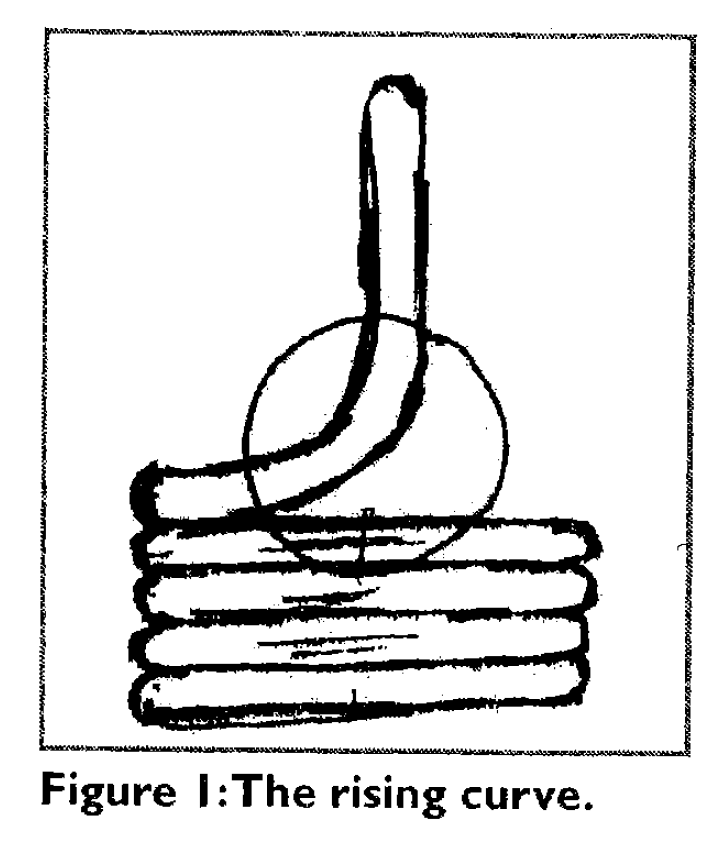
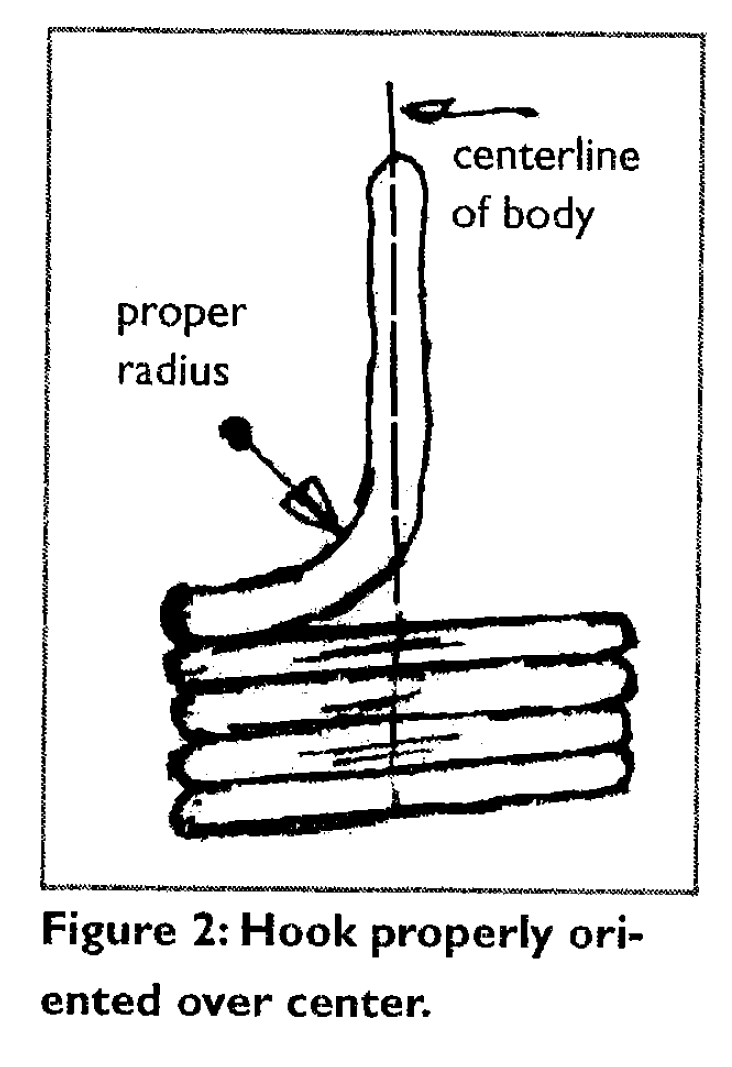
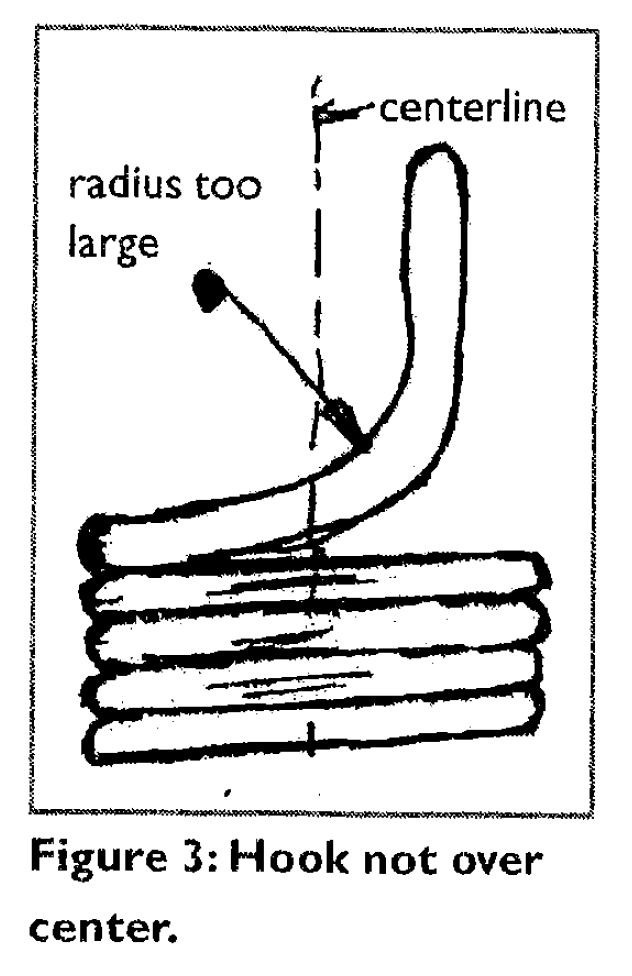
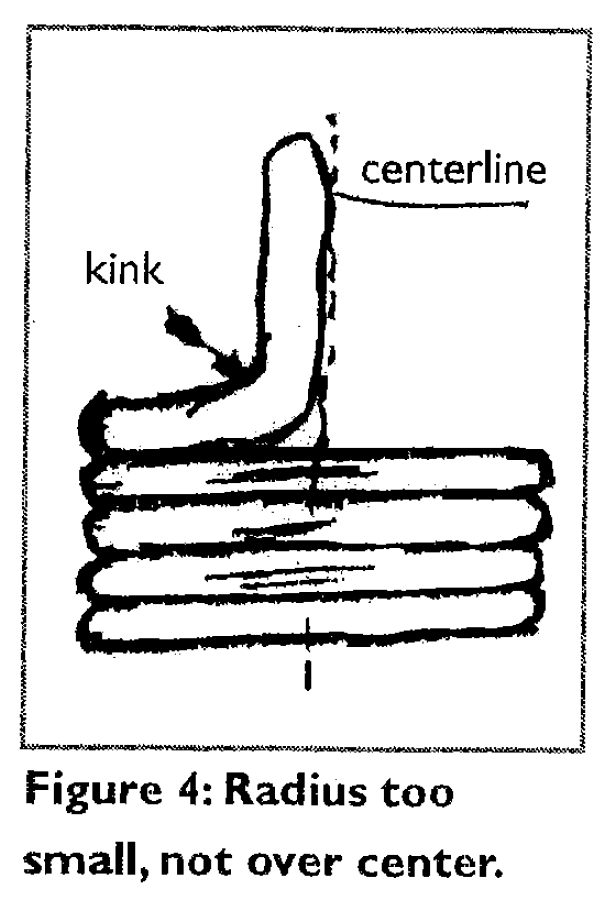
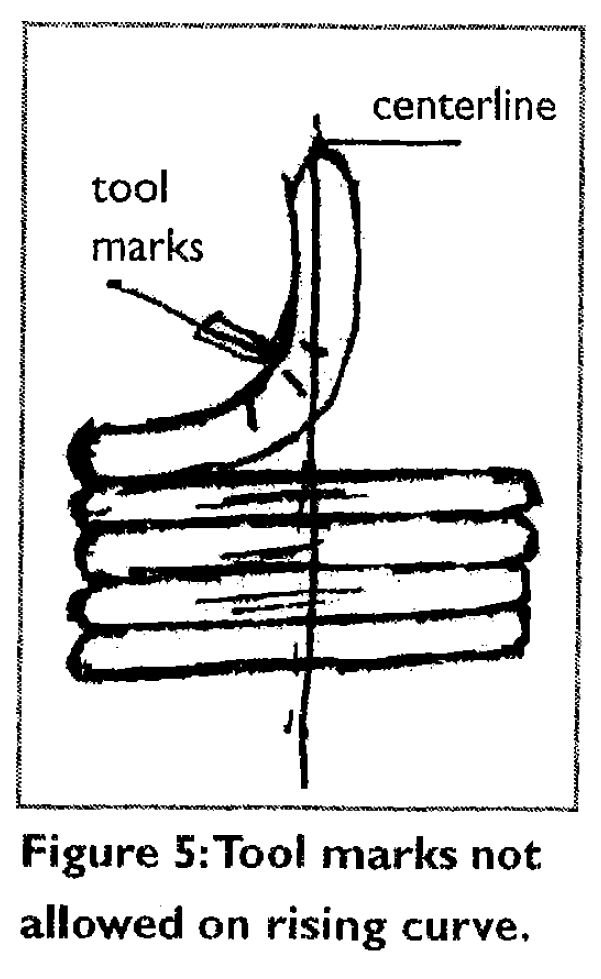
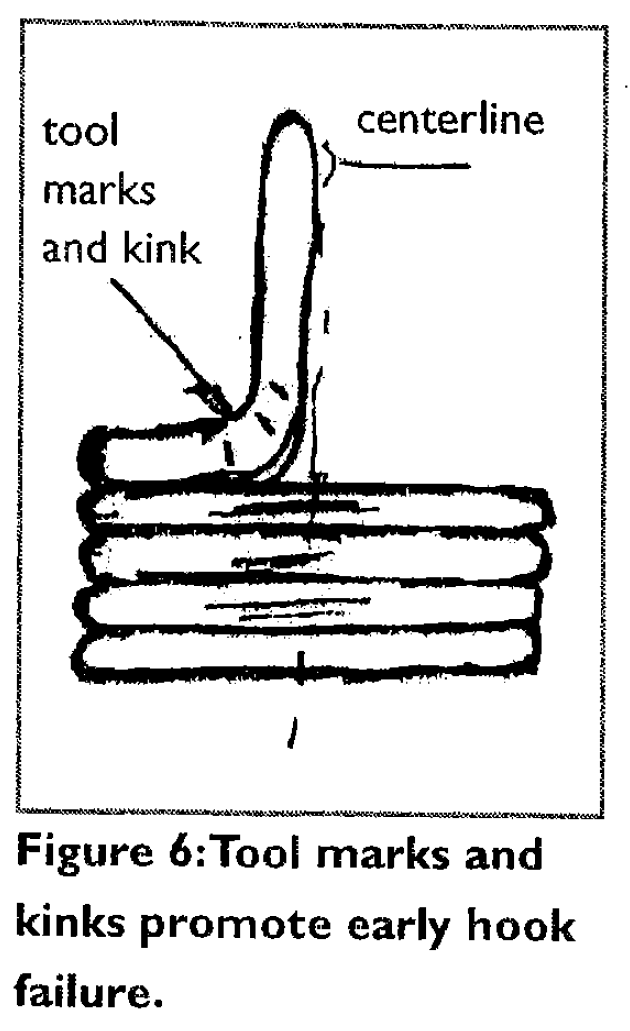
By: Randy DeFord, Engineering Manager Mid-West Spring & Stamping
